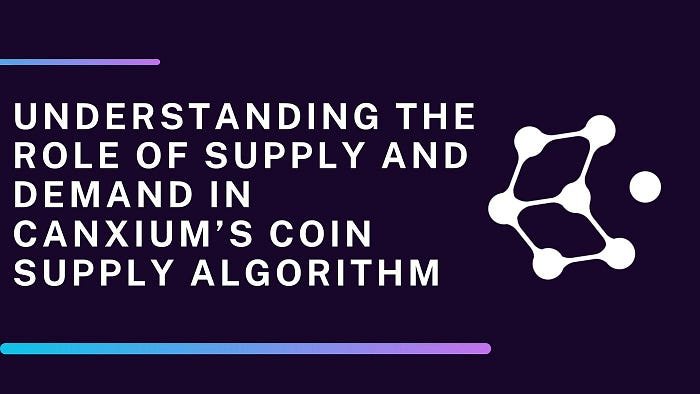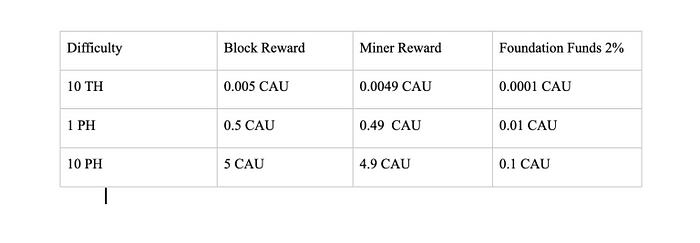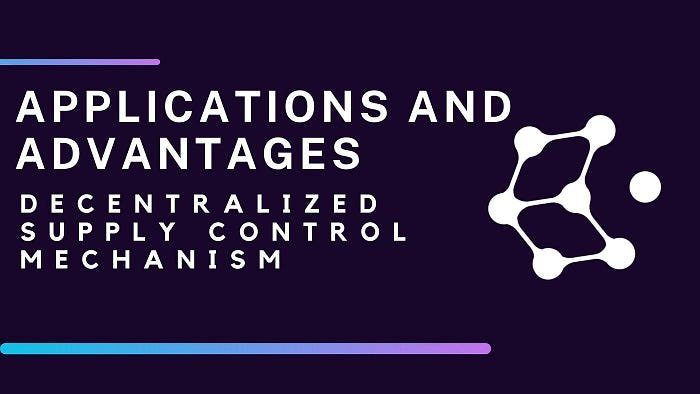Hi, Hive Community, In this post I want to introduce a new innovative project Canxium. So let's dive into the project.
Canxium is a groundbreaking blockchain platform, that introduces a unique economic model which revolves around supply and demand dynamics. Unlike traditional blockchains with fixed supply or inflationary or deflationary mechanisms, Canxium adopts a demand-driven approach, where the total coin supply is determined by market demand. This article delves into the complex economics of Canxium, studying how its supply and demand dynamics shape the value of its native coin CAU and influence the behavior of participants within the ecosystem.
Understanding the Demand-Driven Blockchain Concept :
Blockchain technology has revolutionized various industries by introducing decentralized and transparent systems. Traditional blockchain models, such as Bitcoin and Ethereum, operate based on predetermined inflation or deflation mechanisms. However, Canxium presents a novel concept: a demand-driven blockchain where the total supply of the coin is determined by the interplay between supply and demand dynamics. It uses a decentralized supply control mechanism.

The demand-driven blockchain concept introduces a dynamic and responsive economic system. Unlike traditional models that rely on predetermined supply plans, Canxium allows the market forces of supply and demand to dictate the coin’s availability and value. This approach brought a more flexible and adaptable blockchain ecosystem that aligns with real-time market conditions.
By incorporating a demand-driven mechanism, Canxium aims to achieve a balanced and sustainable economic ecosystem. The change in coin supply based on market demand helps prevent artificial lack or oversupply, ensuring a more organic and market-responsive distribution of Canxium coins.
Canxium’s Unique Economic Model: A Market-Responsive Blockchain :
Canxium stands out from its counterparts with its unique economic model that prioritizes market responsiveness. Canxium dynamically adjusts its economic parameters based on real-time market conditions. This innovative approach allows Canxium to create a market-responsive ecosystem that aligns with the needs and demands of its users.
The market-responsive nature of Canxium’s economic model enables a dynamic and adaptable ecosystem. It allows the platform to respond to changing market conditions, adjusting fluctuations in demand and ensuring the efficient allocation of resources. Canxium’s economic model promotes long-term sustainability. By relying on market forces to determine the coin’s supply and value, it avoids arbitrary decisions or centralized control.
Understanding the Role of Supply and Demand in Canxium’s Coin Supply Algorithm:
By studying the role of supply and demand in Canxium’s coin supply, we can gain valuable insights into the Canxium blockchain’s unique economic model.
Supply and demand are the main factors of Canxium’s coin supply mechanism. When the demand for Canxium rises, caused by factors such as increased adoption, utility, or investor interest, the price of Canxium experiences an upward trend. This surge in price motivates miners to participate in the network, as higher prices result in higher mining rewards. The influx of miners leads to an increase in the network’s computational power and mining difficulty.

The increase in mining difficulty, results in the creation of more Canxium coins. Miners, driven by the opportunity of greater rewards, dedicate their computational resources to validate transactions and secure the blockchain. As the mining difficulty rises, the network rewards miners with a higher number of newly minted Canxium coins. This mechanism ensures that the supply of Canxium expands in response to growing demand, providing a seamless balance between supply and demand dynamics.
Conversely, when the demand for Canxium experiences a downtrend, possibly because of market fluctuations or shifts in user preferences, the price of Canxium decreases. This price decline reduces the rewards for miners, leading to some miners exiting the network. As a result, the network’s computational power and mining difficulty decrease, causing a corresponding adjustment in the coin supply. This mechanism prevents oversupply and helps maintain the stability of Canxium’s ecosystem.

The Mining reward is demonstrated in the above chart as an example. The mining reward increases with an increase in difficulty. More difficulty means more reward and vice versa. It increases the supply of CAU in order to fulfill the increasing demand. Only for the first year, the mining reward is fixed at 0.25 CAU per block to ensure enough supply in the ecosystem. The foundation funds are set to be 2% of the block reward but for the first year, it is 25% to ensure proper development of the project.
Applications and Advantages of Canxium’s Decentralized Supply Control Mechanism :
By studying the applications of Canxium’s dynamic price mechanism, we can gain a deeper understanding of how this unique feature makes it different from traditional blockchain platforms and unlocks various advantages.

Fair and Equitable Pricing: The Decentralized Supply Control Mechanism ensures that Canxium coins are priced fairly and equitably. The market-driven supply model prevents arbitrary price manipulations and creates a level playing field for all participants. This fairness fosters trust and confidence among users, encouraging wider adoption and participation within the Canxium ecosystem.
Incentivizing Miners: It directly incentivizes miners to participate in the network. As the price of Canxium coins increases due to higher demand, miners are rewarded with greater profits. This incentive encourages miners to dedicate their computational resources to secure the network, contributing to its overall strength and security. The dynamic pricing model aligns the interests of miners with the growth and success of Canxium, promoting a robust and resilient blockchain infrastructure.
Price Stability: While Canxium’s mechanism allows for market-driven price fluctuations, it also incorporates stability measures to prevent excessive volatility. Price stability is crucial for both users and investors, as it enhances the confidence and usability of Canxium as a medium of exchange. Canxium aims to maintain a balance between market responsiveness and stability, providing a reliable pricing environment.
Adaptive Economic System: It contributes to the overall adaptability of Canxium’s economic system. It enables the platform to respond swiftly to changes in market conditions, ensuring that the supply and demand dynamics remain in equilibrium. This adaptability enhances the sustainability of Canxium by allowing it to evolve and adjust to arising trends, technological advancements, and user preferences.
User Empowerment: Canxium’s dynamic price mechanism empowers users by giving them more control over their participation in the ecosystem. Users can analyze market trends, evaluate price dynamics, and make informed decisions.
Conclusion:
The economics of Canxium revolves around supply and demand dynamics. Through its innovative economic model, Canxium establishes a dynamic equilibrium between mining activities, user behavior, and market demand, shaping the value and supply of its native coin CAU. By adopting this demand-driven approach, Canxium offers an amazing and responsive ecosystem that aligns the interests of miners, users, and investors. It is paving the way for a more efficient, transparent, and sustainable blockchain economy.
Another interesting and unique feature of Canxium is its offline mining. Don’t understand the term? you might be hearing this term for the first time. Don’t worry, we would publish the details soon. Stay tuned.
Links:
Website: ++https://canxium.org/++
Stats: ++https://stats.canxium.org/++
Explorer: ++https://explorer.canxium.org/++
Github: ++https://github.com/canxium/go-canxium++
Twitter: ++https://twitter.com/canxiumchain++
Source of potential text plagiarism
Plagiarism is the copying & pasting of others' work without giving credit to the original author or artist. Plagiarized posts are considered fraud.
There is reasonable evidence that the original article is machine-generated. Posting such content is considered fraud. Fraud is discouraged by the community and may result in the account being Blacklisted.
Guide: Why and How People Abuse and Defraud
If you believe this comment is in error, please contact us in #appeals in Discord.